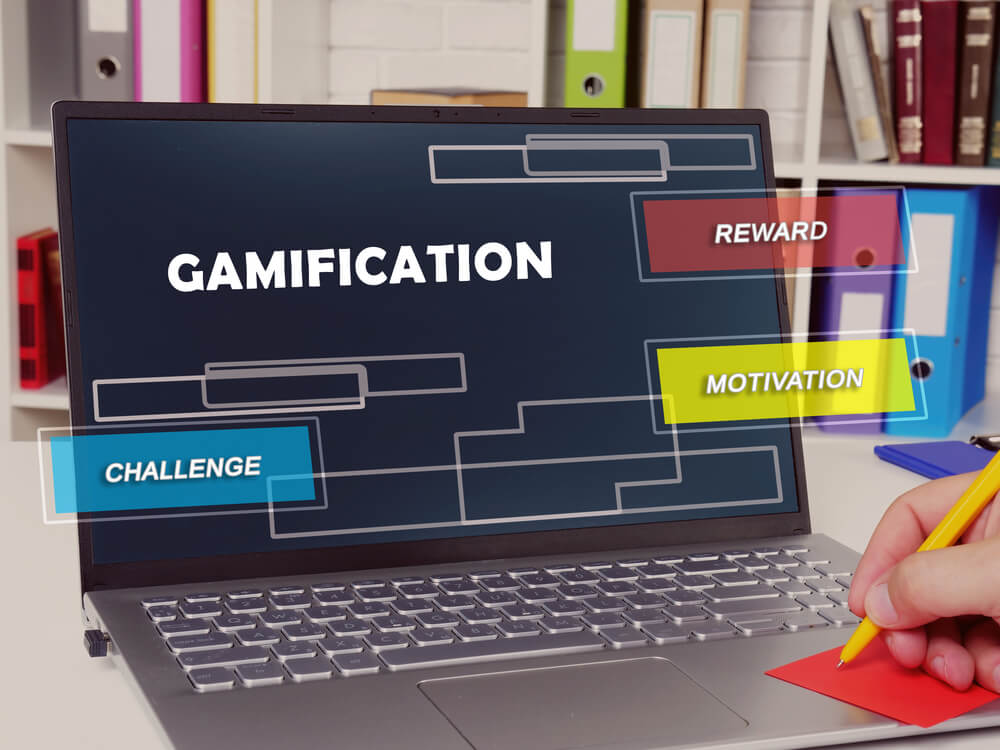
5 Great Interactive Content Ideas for B2B Digital Marketers
Business-to-business (B2B) interactive content offers benefits that drive leads. It actively engages audiences by letting them manipulate and customize information. It empowers users and provides product value beyond passive reading. This aspect of marketing is of such importance that many businesses choose to outsource content needs to companies offering content marketing services.
This article explores the top interactive content ideas that help B2Bs connect with their audiences:
- Interactive infographics
- Interactive videos
- Quizzes and assessments
- Augmented and virtual reality
- Gamification
Read below to learn how B2B businesses maximize these content formats to scale, attract customers, and increase revenue. Let’s go!
We're the top B2B Content Marketing Agency in America. Watch the video below to learn why.
The Rise of Interactive Content in B2B Marketing
What is interactive content, and why is it a growing B2B content format? Interactive content has the following attributes:
- Customization. Interactive content promotes self-directed exploration and a personalized pathway through the information. It lets people reveal specific sections, filter data sets, or configure demonstrations to their needs.
- User control. Information and narrative manipulation are core to interactive content. This feature leads to satisfying buying choices.
- Participation. Interactivity facilitates collaboration between users and the brand, whether answering quizzes or sharing feedback through polls.
- Adaptability. Smart interactive content responds to user input by adapting its display. This characteristic creates a dynamic, immersive, and personalized experience.
Interactive content has been around for centuries. One of the earliest examples is the 1920s work of French painter and sculptor Marcel Duchamp. The viewer best experienced “Rotary Glass Plates” by standing a meter away from the optical illusion.
On the other hand, email marketing helps bring interactivity online when companies ask users for their information and consent to sign up for mailing lists. Subscribers can also communicate directly with the brand on the same platform.
Interactive content marketing is enduring for many reasons:
- It actively engages the user, who can self-direct their learning journey.
- B2Bs use this content format for lead generation. For example, quizzes and surveys help qualify prospects and improve sales funnel strategies based on the collected data.
- People crave customization. It meets their needs, matches their preferences, and makes them feel valued.
- Personalization fosters customer loyalty, which specifically matters for B2Bs. Retention helps shorten the sales cycle, leads to more predictable cash flow, and enhances industry leadership.
- Humans are born curious, which compels them to learn or explore.
- Interactivity stimulates the senses, enhancing information processing and memory retention.
Interaction generates long-term revenues and relationships, but of the many content ideas today, which should B2B use? Here are five:
1. Interactive Infographics for Data Simplification

Regular infographics display static information. Interactive options work the same way, except they have built-in customization tools. Users filter data sets, click elements for details, toggle between views, and adapt the infographic to changing input parameters. This ability gives them autonomy over their learning.
B2B organizations use this content format in different ways:
- Simplify complex data.
- Improve understanding of challenging concepts for visual learners.
- Combine graphical appeal and utility, especially when B2Bs combine infographics with calculators.
Designing an interactive infographic begins with the core content. Structure it first, including breaking it down into a digestible format. Then, introduce interactive elements to enhance its value.
Simplicity is also crucial to avoid information overload. For example, leverage responsive resizing and scrolling instead of presenting all the data in one visual. Add intuitive prompts and visible tabs. Strategically place interactive elements where users might seek more information.
Following these tips results in seamless, self-directed learning that suits B2B audience interests.
2. Interactive Videos for Immersive Storytelling
Video marketing works, but it is more effective in driving demand than sales. It is less interactive than most people think. People watch and listen while a brand displays an ad.
This makes interactive video a game-changing marketing tool. It significantly boosts attention, comprehension, and retention because people now control the narrative. It also pushes them more quickly into the sales funnel, with perhaps a clickable button revealing a product’s SKU.
The concept of interactive videos is young and comes with many limitations. These include the cost that comes with personalizing and designing the interface.
Currently, they help elevate product demonstrations. A good example is adapting a “make your own adventure” style for immersive storytelling.
The table below shows how it works:
| Element | Suggestions |
|---|---|
| Introduction | - Hook viewers with an intriguing opening question. (e.g., “Want to explore how our software can transform your workflows?”) - Lay out two to three primary paths for the story (e.g., improving remote work, optimizing marketing campaigns, or streamlining customer support). |
| Branch points | - Use clickable overlays inviting viewers to pick a specific path at every branch point. - End each fork with a compelling cliffhanger previewing the choice’s value. |
| Path progression | - Let viewers “step into” the shoes of a persona matching the use case as you walk through the demo. - Use screen recordings and voiceovers to showcase how the software solves problems for that work profile. - Deftly guide them in making additional choices between feature sets to personalize further. |
| Visual design | - Use contrasting solid colors for the choice buttons to make them pop and encourage clicks. - Include recognizable visual icons to represent personas and work activities. - Animate transitions between paths and product workflows for seamless onboarding. |
Interactive videos also work well with webinars, where attendees can ask questions, answer polls, or participate in discussions.
Many platforms also resolve pressing problems during live streaming. Amazon, for instance, announced IVS Real-Time Streaming for latency-sensitive activities. It simultaneously supports 12 hosts and 10,000 viewers.
3. Quizzes and Assessment Tools for Audience Segmentation

Quizzes and assessment tools are some of the most common interactive content ideas. They are easy to implement and cheaper to build and run. They are also flexible. B2Bs can ask a short three-question poll or a long multiple-question page.
Additionally, these content formats support lead generation in two ways. First, they provide more value to lead magnets.
Consider HubSpot. This marketing platform includes an assessment tool to help marketers gauge their expertise. The site then generates a custom report, which users get in exchange for their email.
Second, financial calculators, collaborative boards, and polls are excellent for audience segmentation. The answers provide richer market insights through the following:
- Capturing psychographic data such as pain points, goals, and decision drivers.
- Measuring brand perceptions.
- Benchmarking users against business metrics, such as pipeline targets.
- Tracking trending challenges and market gaps.
B2B marketers then use this data to build more accurate customer personas and precise campaigns. They also segment users into lifecycle stages, from awareness to retention, for tailored nurturing or lead-scoring strategies. All these steps deepen a business’s market understanding, eventually driving revenue and retention.
4. Augmented and Virtual Reality (AR/VR) for Tactile Experience
What do Nike, IKEA, and BMW have in common? These businesses have integrated augmented and virtual reality (AR/VR) into their marketing plans.
The Swedish brand has a home decor app that “adds” furniture pieces from their catalog to real-world spaces. Its Giving Bag campaign is also a prime example of seamlessly relating two different marketing types.
First, Ikea launched a video ad showing a boy pulling products from the brand’s famous Frakta bag. Then, the store built a 19-foot AR version of the bag with multiple QR codes that revealed special offers when scanned.
AR/VR is also a rapidly growing market. It could achieve a compound annual growth rate of 12.60% from 2023 to 2028. Its revenue could reach almost $60 billion by the end of the forecast period.
These technologies are popular because they create more realistic product experiences. AR/VR renders accurate 3D models of products, equipment, and facilities instead of limited 2D specification sheets, diagrams, or photos.
B2B buyers can now “walk around” factories and see real machines remotely. They can control workflows and better understand technical processes than text or video.
Further, AR/VR makes pitch decks engaging. For example, a portfolio slideshow includes an AR mobile app. Clients overlay 3D assets, such as products or infographics, on cue. Sales teams trigger similar models to emerge from brochures or business cards.
VR headsets showcase 360-degree simulated walkthroughs between pitch slides, especially in these sections:
- Company overviews. Model a virtual headquarters lobby, manufacturing facility, or store layout.
- Market data. Transform boring statistics into vivid interactive 3D charts, graphs, and timelines.
- Vision concepts. Render a proof of concept, such as a new software interface or piece of equipment, in explorable 3D.
In online marketing, AR/VR is the next best thing to the physical experience. It validates product quality and business capability, building trust and credibility.
5. Gamification for Increased Intrinsic Motivation

Gamification is when you add gameplay elements to the content. These include earning points or badges from interactions, leaderboards, and tiered challenges with rewards. It provides other B2B benefits besides making engagement fun.
First, it appeals to the younger generation. Generation Z has a huge earning potential but behaves differently than other market segments: it values experiences more, which gamification provides.
Second, gamifying content taps into people’s intrinsic motivation to achieve something. Below is an example:
- Cue. Points, badges, and leaderboard updates are visual cues for users to interact. Notifications, alarms, and reminders are additional signals to return and engage.
- Craving. Limited time-bonus periods, challenges, and new-item unlocks create anticipation and scarcity that drive cravings for participation. The fear of missing out and social competition also ignite cravings.
- Response. Users respond to cues and cravings by performing the target behaviors. These include completing training modules, achieving sales quotas, or swiftly onboarding.
- Reward: Successfully responding delivers variable rewards, such as points and new achievements. These intrinsically unlock privileges, reputations, and prizes that satisfy.
Carefully refining this sequence builds long-lasting habits and behavioral loyalty. It also satisfies the human desire for mastery, purpose, and social recognition.
Summing Up
How can integrating interactive elements into your content strategy enhance your marketing outcomes? It supercharges demand and lead generation. More immersive formats are engaging and fun, especially for younger generations.
They simplify complex concepts for better information recall and personalize brand experiences online. Most of all, these content ideas showcase a B2B’s empathy for its users. It uses innovation to forecast user needs and address problems.
This article cites five powerful interactive content types and their use cases. Contact Digital Authority Partners (DAP), an award-winning digital marketing agency, to customize them to fit your goals and market.
Want To Meet Our Expert Team?
Book a meeting directly here




